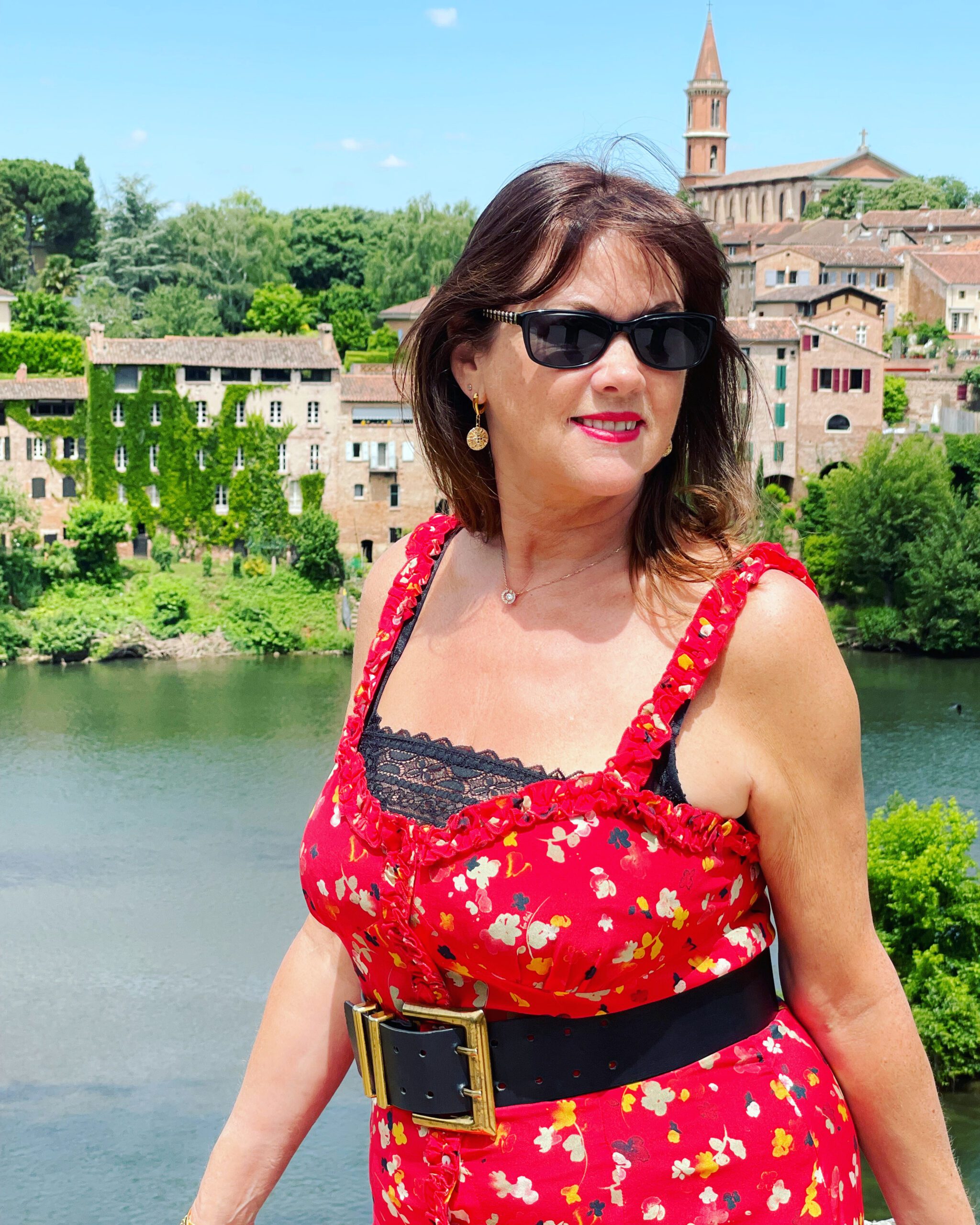When we think of visiting Portugal, our thoughts automatically go to Lisbon, Porto and the Algarve, so today I want to share with you the magical area of Alentejo.

There are lots of reasons to visit Alentejo, including its breathtaking coastline, rich culture and mouthwatering cuisine.
It is set in the South of Portugal, between the Tagus River and the Algarve, and its West coast borders on the Atlantic Ocean. It is an extensive region, essentially rural and sparsely populated, and it makes up about one third of Portugal.
The name “Alentejo” comes from the Portuguese words Além and Tejo, meaning beyond the River Tejo. Go beyond the Tejo and discover a whole other world: The Alentejo!
The beauty of its landscapes and the wonder of its archaeological, monumental, architectural and ethnographic heritage and, par excellence, its cuisine and wines, provide the visitor with exceptional experiences to be discovered through nature and cultural tourism. And it is less than 1 hour from Lisbon, with good rail and road connections.

Stone towers and red tiles stand beyond the groves of cork oaks. The songs of the Alentejo and a scent of coriander and garlic tell you that you have arrived.
The Portuguese call the Alentejo its own nation, with its own dialect, distinct Moorish flavour, white-washed towns, and unique songs. Most towns seem to be on hilltops above the plains, topped by a castle.

This is cork country and the cork trees turn the flowing plains of the Alentejo into a romantic and enchanting place of sun and shadows.
Here you find the largest cork forests in the world, some of the best olives, pottery towns, and walled hilltop towns with castles dressed in marble.
WHAT TO DO IN ALENTEJO
Explore the Alentejo Coastline
Discover more than 85 miles of beaches along the Alentejo’s Atlantic shore, one of the most preserved coastlines in Southern Europe.
Getting to these pristine beaches is easy, but choosing one is not! From Troia, the closest to Lisbon, to Zambujeira do Mar, Almograve, Malhão, Melides and Porto Covo, there are so many options.

You can try a different beach every day, or just pick one, and come back again and again.
Visit Evora and Elvas : World Heritage Cities

The legend of Elvas, “Guardian of the Frontier,” is written in every stone of this walled city’s massive fortifications. The fortifications comprise both medieval and later walls, three small forts, a historic center, aqueduct and the star-shaped Santa Luzia and Nossa Senhora da Graça forts.

Walled Évora is an open-air museum of a city and its historic center has Visigoth, Roman and Arab influences that preserve traces of life from more than 2,000 years ago.
The beauty of Évora shines through the many historic sites: the Roman Temple; Cathedral; Church of São Francisco with its famous Chapel of Bones; Church of São João Evangelista, the house of Garcia de Resende’s window; and the expansive Giraldo Square. But it is in the 15th and 16th centuries, when Évora became the second seat of the Royal Court, that this city reached its peak. Today, this beauty remains intact and a unique example of the golden period in Portugal.
Visit one of its stunning nature parks

The Lagoas de Santo André e da Sancha Nature Reserve
This nine-mile strip of land near Sines is home to rare fish species, such as eels and roach, and thousands of migrating birds (including Eurasian Coots and the Eurasian Reed Warbler) take shelter here between seasons.
Although the Reserve resembles a beach, the lagoons are entirely separated from the Atlantic and swimming in these waters is safe and calm.
The Sudoeste Alentejano e Costa Vicentina Nature Park
This nature park covers more than 60 miles of protected land and shore, stretching from São Torpes near Sines to Cape São Vicente, Europe’s most southwesterly point, in the Algarve.
This protected area has about 30 certified habitats with more than 100 rare species of plants, as well as cliffs that hide nests of white storks.
The Vale do Guadiana Nature Park
This sparsely populated and green land is set between the olive groves of Serpa and the cork oaks of Mértola. Pulo do Lobo is the tallest waterfall in Southern Portugal, standing about 100 feet high.
And, the Tapada Grande beach, in Mina de São Domingos, Mértola, provides an opportunity to cool down from the dry Alentejo heat with a swim.
The Serra de São Mamede Nature Park
This nature park is home to a forest of oaks, chestnuts, olive trees and more than 800 species of plants that share their habitat with reptiles and birds. The walled village of Marvão, set atop a steep mountain, provides a view of raptors soaring in the sky below.
The Serra de São Mamede Nature Park offers hiking as well as mountain biking, from historic village to historic village. The medieval Castle of Portalegre is located within the park and offers beautiful views.
Visit a safari park or a wildlife sanctuary
You can tour the African savanna without leaving Portugal. There are several parks where you can see giraffes, impalas, zebras, buffaloes, ostriches and antelopes roaming in special natural habitats.
Hiking and Biking
Just one hour from Lisbon, the agricultural and rural nature of the Alentejo region of Portugal contributes to a slower, more traditional pace of life, and one of the best ways to experience it is on foot or by bike.
When you come to the Alentejo, don’t forget your hiking boots. From mountains and waterfalls, to ocean cliffs and flatlands, there are endless miles of trails to hike in Portugal’s wild country.
Alternatively, you can hop on a bike and explore the plains and hills on two wheels, cutting through the groves and roads of one of Portugal’s most extensive biking routes. Cycle along the coastline on the EuroVelo 1 trail, also known as the Atlantic Coast Route, and enjoy the protected coastline, small towns, fishing villages and stretches of dunes and beaches on the Rota Vicentina bike routes.
Ten wonderful things to eat and drink in Alentejo.
Alentejo is one of the best regions to indulge your inner foodie on a culinary adventure, where hearty, countryside cuisine may not be the country’s lightest, but surely produces some of Portugal’s most memorable meals.
Porco Preto

The Portuguese know how to dish up the pork, serving it throughout the country in umpteen delicious ways, but none might have a better handle on the ham than the Alentejans.
Porco Preto (Black Pork) comes from the Iberian pig, a breed native to the peninsula and revered throughout, whose distinct taste is often influenced by their cork tree acorn diet. This dish of slow-cooked black pork is served as tender as the night and counts for a meal you’ll never shake from your taste buds.
Açorda

Most cultures have a historical use for day-old bread and the Portuguese are no exception. This dish, served throughout the country but especially in the Alentejo, consists of mushed rustic bread with coriander, garlic, olive oil, vinegar, water, white pepper, salt and poached eggs.
In other parts of Portugal, it can take on a seafood twist, with shrimp or salted cod added. Doused with a bit of peri-peri (traditional hot sauce), it’s a dream.
Ensopado de Borrego
Simmered to tenderness levels that will turn your taste buds on end, this traditional Alentejan braised lamb stew epitomizes home cooking in the region for many. The ingredients that make up this hearty wonder run long and deep – cider vinegar, bay leaves, pepper, parsley, cloves, onions, garlic, coriander – all of which combine into a soupy pool best soaked up with rustic pão Alentejano (local bread). Think cold winter nights, a glass of Alentejan red, and a crackling fire.
Sericaia
A typical conventual sweet (desserts traditionally made by nuns in convents), its origins are said to be Indian or Brazilian, depending with whom you speak, but it was indisputably perfected in the Alentejo around the town of Elvas.
If you like eggs, sugar, and cinnamon, you’re in luck. Baked in the oven and sold in the same dish it is prepared in, the high-heat causes the upper layer of egg whites to crack, giving the traditional sweet its notable appearance. It’s often served alongside local plums.
Queijo de Serpa

Every region of Portugal has its cheeses and it will take you ages to work your way through them all.
In the Alentejo, start with this raw sheep’s milk cheese from the Serpa district. Matured for 30 days, it’s often brushed with olive oil and paprika during the aging process. It ranges from creamy (amanteigado) to hard (duro) and can be spread as a paste or cut and served with local bread.
This award-winning cheese of the lower Alentejo has been showered with accolades, including a distinction from the Slow Food movement as one of the most extraordinary products in the world.
Poejo
Regional firewaters are found throughout Portugal and poejo, the Alentejo’s unique tipple, is no exception.This sweet liqueur forged from pennyroyal (Mentha pulegium), a medicinal mint found locally, is made in three variations: green (made with green pennyroyal), yellow (made with dried pennyroyal), and clear (made with sun-exposed pennyroyal).
Tread lightly – once the pennyroyal, water and sugar are added to the base spirit, alcohol percentage can soar to 20%. Monks in the Middle Ages believed the concoction to be antispasmodic and stimulating – who are we to argue?
Cozido de Grão à Alentejana
Another hearty Alentejan stew, this regional take on a Portugese-wide dish features an amalgamation of boiled Portuguese sausages (chouriça, morcela, farinheira, among others) and chickpeas, with some carrots, green beans and potatoes thrown in for good measure.
Fresh mint plays an important role in seasoning as well. Basically, it’s a bit of everything in the fridge! It’s served steaming hot, often over pieces of rustic local bread. Another winter wonder, as you might have imagined.
Migas
Another traditional use for day-old bread, the Alentejan version of migas features crumbled wheat bread soaked in garlic and olive oil, among other spices and flavorings, and served alongside pork or lamb chops. If you are familiar with American stuffing, it’s a similar consistency, albeit slightly wetter, and served in a much larger portion (it’s often considered the main event with the meat taking on the side dish role).
Check it off as another hearty, unpretentious addition to the fleet of Alentejan perfections, the kind of stuff grandma makes like nobody else.
Carne de Porco à Alentejana
Perhaps the most famous Alentejan dish – Pork with clams. This traditional stew features Porco Preto (black pork), usually marinated in white wine, paprika, red pepper paste, chopped garlic, and coriander, then pan-fried golden brown and mixed with clams and potatoes.
Versions can be found in other parts of Portugal as well (especially the Algarve) but this mélange of meat and molluscs is a true Alentejo invention.
Adega Da Cartuxa
This revered winery, housed in a former Jesuit refectory with 16th-century roots, is a must-stop among many along the Alentejan wine circuit. Iconic Alentejan wines such as Trincadeira, Aragonês, and Castelão are well-represented in a long list of excellent wines, topped by the granddaddy of them all, the winery’s signature Pêra-Manca.
Tours of the winery are by reservation only; and you can also sample signature olive oil and other gourmet products. As one of the oldest and most beautiful wineries in Portugal, it’s a must-stop for oenophiles looking for a quintessential Alentejan wine experience.

I hope this has given you a taste of the beautiful area of the Alentejo, where you might find a grove of olive trees or a field of sunflowers. You might seek shade within one of the many cork forests- the intriguing, renewable bark of its trees, is a major industry for this region. You might explore the region’s coastline roads or test your muscles by venturing into the mountains at the Algarve border
You might stop to snack on smoked Pata Negra and some locally produced goat cheese.
For more ideas of what to do in Alentejo, have a look below
To finish, here are a few tips on visiting Alentejo, or any area of Portugal
- For the most part, the Portuguese do not tip much— restaurants workers are paid an actual living wage and are not tip-dependent. It’s fine if you leave a few Euros, but beyond that, you are doing a disservice to the local economy.
- Sticking with the dining out theme, the bread, olives, cheese and other goodies that magically show up at your table are not free. You are charged by what you consume and it’s perfectly acceptable to send it all away if you don’t want it. It is not a scam to take advantage of unsuspecting foreigners — it’s just how things are done in Portugal. And when you go to pay, they will accept cash (of course), Multibanco (Portuguese debit cards) and/or Visa (meaning credit cards, be it Visa or MasterCard).
- The Portuguese are very polite. Nearly every conversation begins with “com licença” (excuse me) and any request with “se faz favor” (if you please).
- But generally speaking the biggest difference in Portugal is that things move slower. Everything. And so should you. So, consider a relaxing break in Alentejo when travel opens up again.
Have a look here for places to stay.
Booking.comYou can also read about other areas of Portugal, such as what to do in Lisbon here and what to do and see in the Algarve, here and here.
Information and Images Courtesy of Visit Alentejo.














February 26, 2021 at 4:13 amWow it’s so beautiful! We were suppose to visit Portugal last spring and then well….covid happened. But you’ve got us excited to plan a trip one day soon!
https://honeycombee.com/
February 27, 2021 at 5:15 pmYes, Covid caused a lot of our holiday plans to be put on hold! I hope you get to visit Portugal one day soon x
February 24, 2021 at 1:00 amOh wow it looks gorgeous here! Praying for things to get better so we can all travel more!
Life is a Shoe
February 27, 2021 at 6:13 pmThanks Celyn! I really hope we can all travem more soon too xo
February 22, 2021 at 4:07 amWhat a beautiful place! I wish I can travel there one day!
xoxo
Lovely
http://www.mynameislovely.com
February 22, 2021 at 12:13 pmI’m sure you would love it! xoxo
February 21, 2021 at 3:15 pmWonderful views and foods! I wish I could visit Portugal one day I’ll definitely make schedule to visit Alentejo, thanks for sharing 🙂
xoxo,
|CHELSHEAFLO|
KINDLY VISIT NEW POST:
https://www.chelsheaflo.com/2021/02/review-zalina-soap-natural-body-wash.html
February 22, 2021 at 12:17 pmGlad you liked the post Chelshea xo
February 21, 2021 at 2:36 pmWow it is so beautiful!! I would love to travel there one day.
http://www.rdsobsessions.com
February 22, 2021 at 12:16 pmIt really is worth adding to your bucket list!
February 21, 2021 at 12:58 pmHow beautiful and unique the Alentejo Gabus hill is … so beautiful to look at and also for photo spots.
There are also many interesting destinations that can be seen there … very potential as a leading tourist destination in Portugal.
Greetings.
February 22, 2021 at 12:13 pmYes, Portugal is a beautiful country and so varied! I love Lisbon and the Algarve too!
February 20, 2021 at 2:39 pmSo nice you enjoied our Alentejo.
You must come to Monte da Estrela country house and spa.
We are an Agroturismo, small family runed hotel.
Please check
http://www.montedaestrela.pt
Or follow us at
@montedaestrela
Contact us to
geral@montedaestrela.pt
????????
February 22, 2021 at 12:12 pmYour site looks beautiful! I will definitely keep you in mind for my newt visit to your area xo
February 20, 2021 at 11:57 amPortugal is on my wish list for such a long period of time and after I read this post and look at photos I hope so that one day I can visit it.
New Post – https://www.exclusivebeautydiary.com/2021/02/the-unrivaled-skincare-products-that.html
February 22, 2021 at 12:05 pmI hope you get to visit it too! Last time I flew to Lisbon, drove down to the Algarve and flew back from Faro! Now, I can’t wait to go back! xo
February 19, 2021 at 10:58 pmI really want to visit Alentejo one day! I am originally from Madeira Island and I have been to Portugal mainland a few times but only to Lisbon or Oporto. Alentejo looks absolutely beautiful.
February 22, 2021 at 12:02 pmI have always wanted to go to Madeira – I’ve heard it’s really beautiful! I have been to Portugal mainland quite a few times, but never Madeira! xo
February 19, 2021 at 10:23 pmI have never been but your post makes it look like an amazing place to visit, so many beautiful photos! Such a helpful overview that will be good for anyone considering travelling there when travel is allowed again 🙂
Hope that you are having a good weekend!
February 22, 2021 at 11:54 amIt’s definitely worth adding to your bucket list for when we can travel again! xo
February 19, 2021 at 5:47 pmWhat an amazing place to visit, Julia! From all of your photos, it’s absolutely gorgeous.
Make Life Marvelous
February 22, 2021 at 12:00 pmThanks Ashley! Definitely worth a visit!
February 19, 2021 at 9:27 amOmg I want to go there. I will definitely remember Alentejo…so pretty.
http://www.fashionradi.com
February 22, 2021 at 11:55 amIt really is pretty and worth adding to your travel bucket list! xo
February 19, 2021 at 12:01 amOh, this sounds absolutely fabulous. We had Spain on our to go list, but this would be perfect to add to the trip!! I pinned it so I’ll remember!!
XOOX
Jodie
http://www.jtouchofstyle.com
February 22, 2021 at 11:44 amYes, I would definitely recommend adding this to your trip, if you are planning a trip to Spain! xoxo
February 18, 2021 at 12:38 pmI would love to travel here in the near future! What a beautiful country! I cannot wait to start traveling again. Thanks for sharing Julia!
https://www.kathrineeldridge.com
February 22, 2021 at 11:42 amThanks Kathrine! I can’t wait to travel again too xo